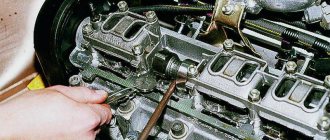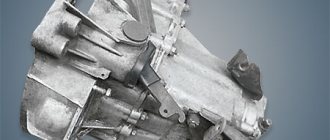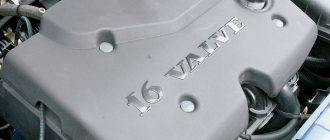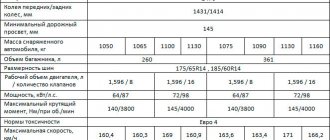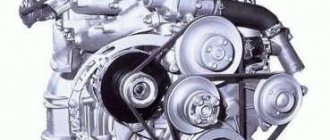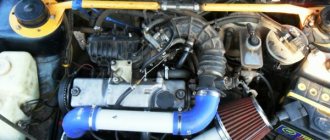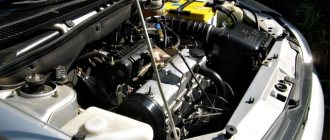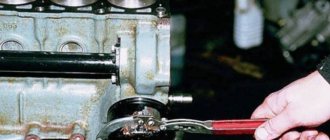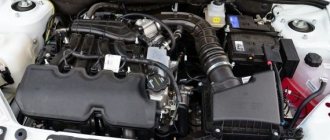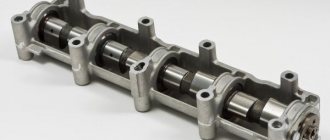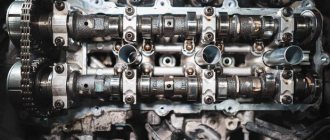We will talk about the sore point and, so to speak, about the budgetary increase in power. As you know, 70% (pelvis drivers) push the camshaft into themselves and complain about the dynamics of the car. Why did the idle disappear and the car became dumber during acceleration (when he set the roller with a phase above 270). The answer is simple, gentlemen: your shaft is not unable to work at the bottom, it works at the top. Yes, this is a very necessary thing, but for combat vehicles operating mainly at high speeds.
For an everyday car, the city mode on such a shaft will be the most severe torment, idle is about 1200-1400 rpm, respectively, you start at almost 2000 rpm, burn the clutch and, accordingly, load the standard parts of the unit, which are not designed for such a load. In the summer, the temperature in the car constantly rises and the car often boils, and it’s good if everything gets by with just a loss of antifreeze. By inserting a part without a special understanding of the characteristics of the camshaft, we can lose not only money, but also possibly end up on the capital of the cylinder head. But we will try to avoid this with you, choose the optimal shaft that really suits your riding style. But. Remember. When installing this or that shaft, you lose something. For example, let’s consider the Nuzhdin 10.93 shaft, which is very well known to you. (Please note that I once went to an online store, looked at this shaft with a phase of 282° and in it it was in the lower section (8-valve engine), although if you know a little about the camshaft, then with a phase wider than 270° it is considered upper. How? It will remain a mystery.) Therefore, it is still worth knowing what you are taking. So, let's continue. Most people install it, and its operating range is not from 2000 rpm to 5000, its range is much higher, it begins to work intensively from 3000 to 6500 rpm. In principle, it is not bad at low end, but a smoother idle speed can be achieved around 1300 rpm. Although some manage to set it to 1100 rpm. The valve travel is quite significant - 2.1 mm; if the valve belt breaks, it will definitely bend (if the engine is 1.5). So, let's try to choose the optimal camshaft for you. For city driving, as everyone knows, you need smooth idle and traction from below (increasing engine displacement will also add traction from below, but that’s another story). Let's consider them: there are three types: ➤ grassroots ➤ instant ➤ horse
Horse camshaft on VAZ 8v
➤ Needs 10.93 ➤ Also Okb and Sti exceed a phase of 270°, but do not forget that the valve stroke can also affect the characteristics of the shaft. Many do not take into account that when installing the shaft higher with a stroke of 11.4, it is worth understanding that the springs and valve plates need to be replaced, since the valve stroke is correspondingly greater, since when the valve components are drained, at valve speeds the valves can hang up and hit the piston, and of course hence the trouble and replacement of valves. Also, don’t forget about the thrust bearings.
Summarize
City mode • bottom shaft no higher than a phase of 270 City-highway mode • standard camshaft Race mode (drag) • top shaft above 270° In general, that’s probably all, I’ll leave it at that. I know that there are a lot of these articles, but I hope it will still help someone when choosing a camshaft and will save someone from a pointless investment. Also, we were considering an 8-valve engine, but the same 10.93 on a 16-valve engine will turn out to be low-end. Previously, I was tormented by the question of adjusting the valves with this camshaft, specifically about the valve clearance. Do not be alarmed if, instead of replacing the adjustable washer on the standard shaft of 1 mm with kopecks, there will be a washer on the new camshaft, higher than 2 mm. The gap given by the manufacturer indicates 0.3 mm, regardless of whether it is inlet or outlet. But this is not so, because XX will be uneven. Make the same gaps as on the stock camshaft.
Types of shafts by model
Ordinary car enthusiasts, especially Chevrolet Niva owners, are trying to find a middle ground that would combine the capabilities of the bottom and top shafts at the same time. Previously, there were no such shafts, but now they exist, and therefore we will show the characteristics of each shaft separately.
The leading manufacturers of shafts for classics and Niva were OKB Dinamika and OKB Dvigatel. And here are some of their products.
OKB Engine
Below is a graph of the characteristics of shafts 144, 44, 044, as well as the standard one.
The upper part of the graph shows the torque, and the lower part shows the maximum power and indicates at what speed the peak will occur.
- The highest in this chart can be considered the 44th shaft. Torque is fully felt at 4000 rpm, and maximum power at 5500 rpm. If you don't rev your engine to that level, there's no point in having this camshaft for you.
- 044 on the chart is the lowest. It has the most torque, but peak power is even lower than stock. Suitable for off-road or city use.
- 144 is the golden mean. The characteristics are greater than those of the stock in all respects. At the same time, the shaft feels good both at the top and at the bottom.
OKB Dynamics
This design bureau provides a larger number of types of shafts. And the shafts themselves have a lower price.
113 and 114 shafts. They have the same characteristics, but the second one is designed for hydraulic pushers. An ideal and budget option for those who want to increase both the top and bottom at a minimum cost. There will be no significant increase, but torque will increase by 10 Nm, and power by 6-10 hp. The shafts are considered the lowest of the line.
115 shaft - suitable for modified or bored motors. There is no point in installing it on a production engine. Pickup from 3000 rpm. Considered to be a horseman. When driving at low speeds, it’s worse than stock. However, this point is controversial and depends on the overall refinement of the engine.
118 and 119 shafts are analogues of the previous one and are suitable for a production motor. The low-end performance is a little higher, but it works mainly in the upper range. Gives a good increase in power. 119 - for engines with hydraulic pushers.
125 shaft - suitable for bored engines up to displacement 1.9. The use of such a shaft on serial engines is impractical. The increase will depend on the degree of refinement. It is considered top-end - from 3500 rpm.
130 shaft is considered top-end and performs well on engines brought to a volume of 2 liters. Starts working at 4000 rpm. Naturally, the increase depends on the overall level of refinement.
Not all known shafts are considered here. If you are interested in other specimens, you can study the characteristics of the Nuzhdin shafts.
Why do you need a split gear on Niva?
Any sports camshaft has flexible adjustment. The car owner has the opportunity to shift the valve timing to add torque at the bottom or at the top. In order not to unscrew or rearrange the camshaft sprocket, there is a split gear for this:
This gear allows the teeth and chain to remain stationary, and the shaft itself to be rotated to the desired degree. The moving part is fixed using six bolts.
Skillful use of a split gear makes it possible to improve the characteristics of an already good shaft.
And here is a sports camshaft
Why do we need a camshaft, and even a sports type? It turns out that everything is very simple and logical. After all, the graphical indicator of torque (curve) directly depends on the gas distribution parameters. They are also called “valve timing”. Which imply the time and amount of opening of the valves in the engine. And as you know, from the engine design, these values depend on the profile of the camshaft cams and their angle of rotation. In this regard, most production cars have a certain average valve timing. Since the common man needs that in lower gears the car can move off confidently, and when driving at medium and high speeds, fuel consumption and engine response are effective.
The camshaft affects the entire operation of the engine
Those who do not see themselves outside of a high-speed and dynamic car simply need to replace the standard camshaft with another tuned one. They are often called sports.
Classification of sports and tuned camshafts
Naturally, different sports camshafts are used for different cars. However, they are all divided into several classes. This classification primarily indicates the operating range of the engine at which the shaft provides maximum efficiency.
Grassroots
This is how low-level camshafts are distinguished. This type of shaft provides a small amount of valve lift, but there is no valve overlap zone (when the intake and exhaust valves are slightly open at the same time). In this case, the working mixture from the combustion chamber is prevented from getting back into the intake tract. However, low lift height causes insufficient mixture to enter at high speeds, which reduces maximum power. In this regard, this class of camshafts is used for urban vehicles - city cars.
The advantage of low-speed camshafts is high torque at low speeds. This allows you to accelerate sharply from a standstill (at traffic lights, intersections). In the middle range, such camshafts behave similarly to serial ones, but in the high range they are even inferior to them.
Universal
This class of camshafts is also called “highway-city”. They are not too different in performance from the serial ones, and have high performance precisely at medium engine speeds.
Overhead camshafts
The so-called “high” class camshafts have a wide valve overlap area and have wide phases. This helps fill the engine with mixture at the top, due to an increase in the flow area in the valve areas and due to an effect such as inertial charging. The latter phenomenon is the drawing of the air-fuel mixture into the combustion chamber due to the release of combustion products into the exhaust manifold. It looks like a vacuum suction effect. In this case, the engine receives a noticeable increase in power, and torque has a maximum value in the high speed zone. However, at lower levels this leads to failures in engine operation due to the fact that part of the mixture is pushed back into the intake manifold. Moreover, the higher the maximum torque value in relation to engine speed, the stronger the negative effect at the bottom. It is the riding camshafts that are further divided into two subtypes: riding tuning and riding sports. They differ from each other only in phase characteristics.
Horse racing camshafts
Horse racing camshafts are absolutely not designed for driving in urban conditions. They have a significant dip at low engine operating ranges, and maximum output only at extreme operating conditions.
Torque and its effect on engine performance
In order to understand why a car needs a sports camshaft, we should consider the problem of torque from a technical perspective. Probably, more than once, owners of the domestic automobile industry felt that the engine became more or less responsive only after the 3000 rpm mark. Before this indicator, any attempt to squeeze fast acceleration out of the engine leads to failures in operation and jerking of the car. Which ultimately leads to clutch failure. And in fifth gear, until you accelerate the car to an acceptable speed, it refuses to go at all. This is due to the fact that at low and medium speeds the torque value is very low, this significantly reduces the torque of the engine, regardless of its power. The best option is an engine in which, both in the low, medium, and high ranges, the torque indicator is stable and as close as possible to the peak. But, unfortunately, such an ideal option has not yet been created. Although, thanks to tuning, you can get a little closer to ideal.
Relationship between engine speed and torque
Factors influencing the price of a part
Camshafts are sold in different places and at different prices. The cost of such spare parts is influenced by the following factors:
- Quality.
- Variety.
- Part location.
- State.
- Originality.
- The type of motor for which the spare part is purchased.
- Brand.
- Complete set of parts.
- Payment method.
- The fame of the store and its pricing policy.
- The need for delivery and the cost of such a service.
Part types
Camshafts on the VAZ 2114 are divided into types according to different criteria: condition, manufacturer, configuration, design features, etc.
Camshafts are classified according to their location:
- With a lower location.
- Top positioned.
The camshaft can be:
- Ordinary.
- Tuningov.
- Sports.
There are camshafts for VAZ 2114 on:
- Eight valve engines.
- Sixteen-valve engines.
According to the configuration, you can buy a camshaft:
- No additional elements.
- Complete with adjustment bolts and rockers.
The manufacturer's detail may be:
- Original.
- Unoriginal.
According to the condition, you can take the camshaft:
- New.
- boo.
At the place of purchase, the spare part is:
- Bought at a car market.
- Purchased from a specialty store.
- Taken from a private advertisement.
- Bought at a car wrecker.
- Ordered from the online store.
You can buy a camshaft of this brand:
- AvtoVAZ.
- Needs.
- Stolnikov.
- ZMZ.
- USA.
- Premier.
According to the payment method, a purchase can be made:
- On credit.
- In installments.
- Through personal financial savings.
